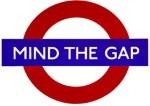Marketing 101: what you are vs. what you say you are
 As previous posts have noted, there is a lot of movement in the job board industry right now – startups, acquisitions, IPOs, and more. All of this activity is ultimately about business – who wins, who loses, and who survives. Some businesses can go for years without a profit (Amazon, anyone?), but in general, if you’re not making money in the online recruiting biz, you’re usually gone after a while. Think BranchOut and other recent flameouts.
As previous posts have noted, there is a lot of movement in the job board industry right now – startups, acquisitions, IPOs, and more. All of this activity is ultimately about business – who wins, who loses, and who survives. Some businesses can go for years without a profit (Amazon, anyone?), but in general, if you’re not making money in the online recruiting biz, you’re usually gone after a while. Think BranchOut and other recent flameouts.
A key part of any online recruiting business’s success is its relationship with candidates: do they know you? Do they use you? Do they rely on you? If the answer to these three questions is ‘No’, then you’re in trouble. You just don’t have a business without candidates.
It make sense, then, that the message about your business that you deliver to candidates is critical. The message needs to be straightforward, clear, understandable, and it has to have at least some degree of differentiation from the thousands of other messages that the candidate receives. In other words, the message has to stick. This is why so many job boards struggle with their marketing – their message is often, ‘hey, we’re just another job board.’
But there’s another component here: the gap between what you are, and what you say you are. I think of this as marketing 101, honestly. A great example of this is LinkedIn. They call themselves a professional network. Yet most recruiters and HR professionals view them as a job board. Candidates view them as both. From a marketing perspective, what LinkedIn has done is brilliant – they’ve distanced themselves from an unpopular term – ‘job board’ – while leveraging the lucrative aspects of being a job board.
We’re now seeing a similar pivot by Glassdoor. For a long while they were a company comparison site – Angie’s List for candidates. But now they resemble a – you guessed it – job board. But like LinkedIn, they don’t pitch themselves as a job board – instead, they’re an employer branding portal (at least to employers). For candidates, the message is perhaps a bit fuzzier – there are still the comparison/backgrounder elements, but of course there are jobs, jobs, jobs.
So what? Does it matter if a business is one thing, but calls itself another?
Sometimes. If the gap is too wide between the ‘message’ and reality, a cognitive dissonance grows between what the candidate (or employer) sees and experience when they use the services, and what the business tells them they’re seeing and experiencing. Remember JC Penney’s failed attempt to become super hip? What was being advertised just didn’t line up with what was happening on the ground. That’s the danger any business faces.
What does the future hold for GlassDoor, LinkedIn, and others that are taking this approach? Perhaps the differences I’ve noted above are too granular to make a difference. Only time will tell. But it’s wise to keep these thoughts in mind as you market your own services. Follow the guidance of this marketing 101!
[Want to get Job Board Doctor posts via email? Subscribe here.]. [Check out the JobBoardGeek podcast archive!]
Comments (0)